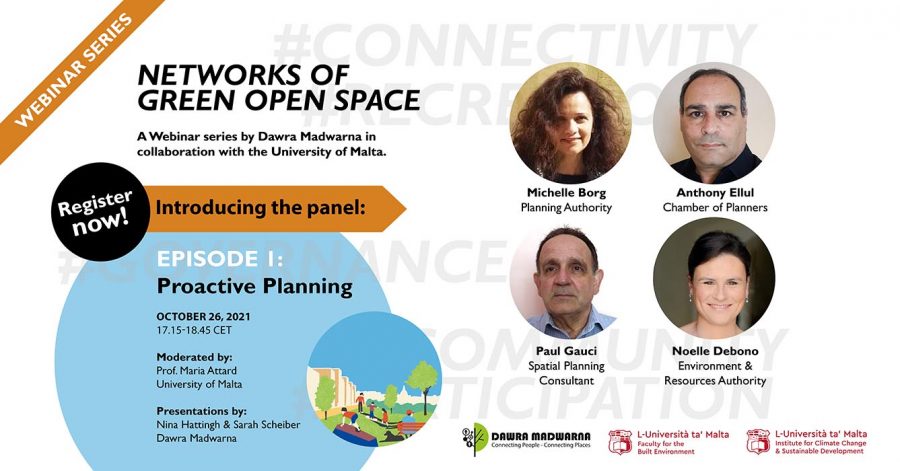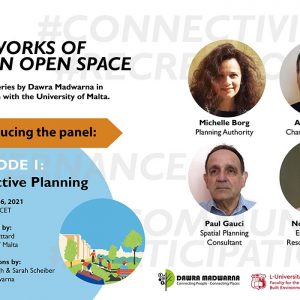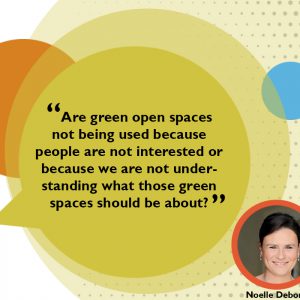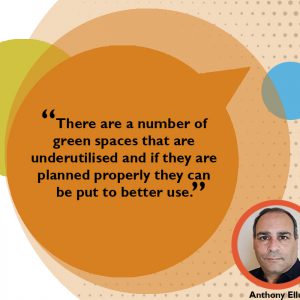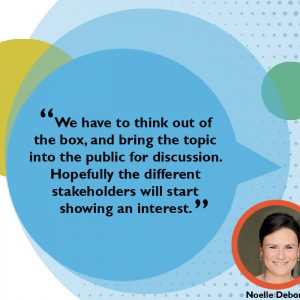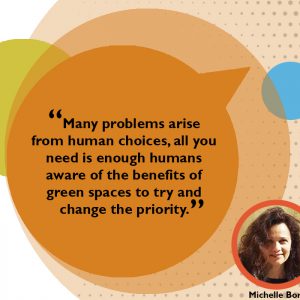Activities
Networks Of Green Open Space – Webinar Episode #1
The first webinar of the series on Networks of Green Open Space was held on the 26th October 2021. Bringing together an appreciable group of interdisciplinary professionals, the webinar focused on introducing the strategic concepts underpinning the subject of Green Open Space Networks, in order to set the foundation for the following webinars in the series. The webinar started off with an introduction to Dawra Madwarna by Perit Nina Hattingh, and an overview of the position paper entitled ‘Networks of Green Open Space in Dense Urban Areas’ by Dr Sarah Scheiber. Prof Maria Attard then moderated a discussion between four invited experts, these being Michelle Borg, Noelle Debono, Anthony Ellul and Dr Paul Gauci.
Delving immediately into the core question on the topic, the experts were asked to give their thoughts on whether Networks of Green Open Space in Malta were a fantasy or whether they could become a reality. Though having divergent approaches to the issue, several case studies of urban greening were mentioned by the experts. Most prominently among these is Birgu, where an activity for residents to green the neighbourhood had a strong community feel and this led to the scheme’s success. It was mentioned that there were green spaces identified in every Local Plan, something that represents efforts made in the 1990s to set up a network of green open spaces; and which shows that green open spaces were already part of the planning structure since the earliest days of the Planning Authority.
Despite this, it was mentioned that there are several examples of privately owned spaces earmarked for expropriation to be converted into public open spaces but were not developed as such, and that policies to develop green roofs on sites which would support other uses were written into the Local Plans but remained unactioned. Underutilised open spaces remain scattered around the Maltese Islands, in Floriana for example, where providing well designed open spaces can become a reality through good land-management. It was noted that the Planning Policy Guide on the Use and Applicability of the Floor Area Ratio (FAR) did not result in the amount of public open space which was expected through the application of the policy. This is a result of the prioritisation of commercial interests, which is also manifested through the appropriation of public land for outdoor catering.
Should the public be more aware that public open space is indeed a public use, as a road is a public use, then positive policy instruments which promote the transformation of private land into public green open space can be actioned. To this end, overcoming political barriers is important in order to achieve progress in the realm of green open space, as is the real inclusion of Local Councils and the community in the decision-making processes towards this aim. It is evident that a wellbeing-first scenario is the way forward, as is being advocated by the forthcoming National Strategy for the Environment, through which collaboration with the community has been invited since the very first stages of policy-making. To conclude on a positive note, during the webinar it emerged clearly that should many small initiatives be implemented, then together these initiatives have the potential to achieve a better environment for the Maltese Islands.
To watch the full episode visit the Dawra Madwarna Youtube channel.
